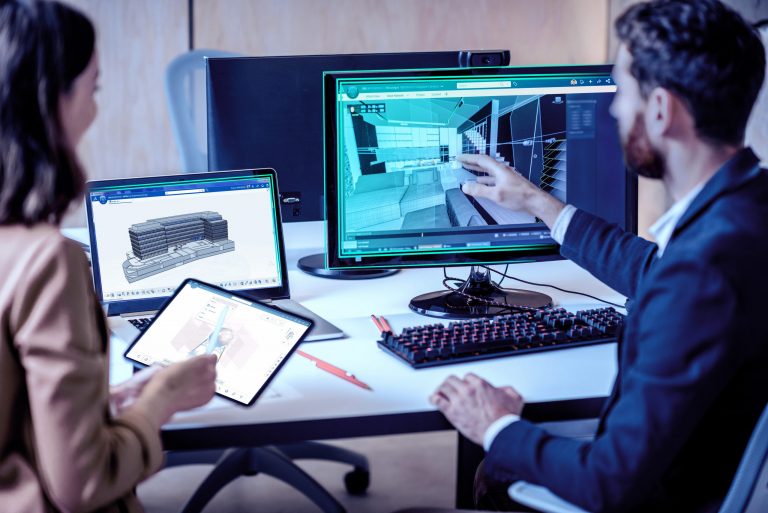The following article is excerpted from How Virtual Twins Drive More Sustainable High-Performance Buildings: download the full whitepaper here.
Today’s project-based construction process is set to shift radically to a product-based approach that is more standardized, efficient and integrated. This will improve customer satisfaction and offset the costs of conforming to evolving climate regulations.
The virtual twin can facilitate circular design relating to product reuse, recycling and cascading. Key areas to make circular design economically viable include material selection and procurement, standardized components and design for easy end-of-life sorting, such as Cradle to Cradle certified building materials.
We see a real shift toward off-site productization. Though modularization, prefabrication and off-site manufacturing in safe and controlled environments are not new, the combination of lighter-weight materials that simplify traceability, material transportation, digital planning and automated production systems could foster new levels of quality and efficiency in products and operations. Instead of building uniquely designed structures on-site, companies will manufacture components and whole buildings off-site as transportable pieces. This approach improves quality as much as the work is completed in factory conditions, resulting in faster and efficient approval processes.

According to a 2018 McKinsey survey, 40 percent of home builders in the UK and 45 percent in Scandinavia invested in manufacturing facilities or intended to do so soon.
Energy optimization is another key objective today. By integrating this early into the design process using virtual twins, energy consumption in buildings can be reduced by 30 to 80 percent, providing a real market advantage. And some of these energy solutions can be retrofitted to existing buildings which is key as many older buildings, for example, were not designed for energy efficiency.
A big barrier to more efficient sustainable solutions in the construction industry has been siloed working and lack of coherence and alignment along the value chain from various teams. The virtual twin tackles siloed working, enabling better collaboration, better control of the value chain, contractual coherence and data-driven decision making.
Excerpted from How Virtual Twins Drive More Sustainable and High-Performance Buildings, a Dassault Systèmes whitepaper

